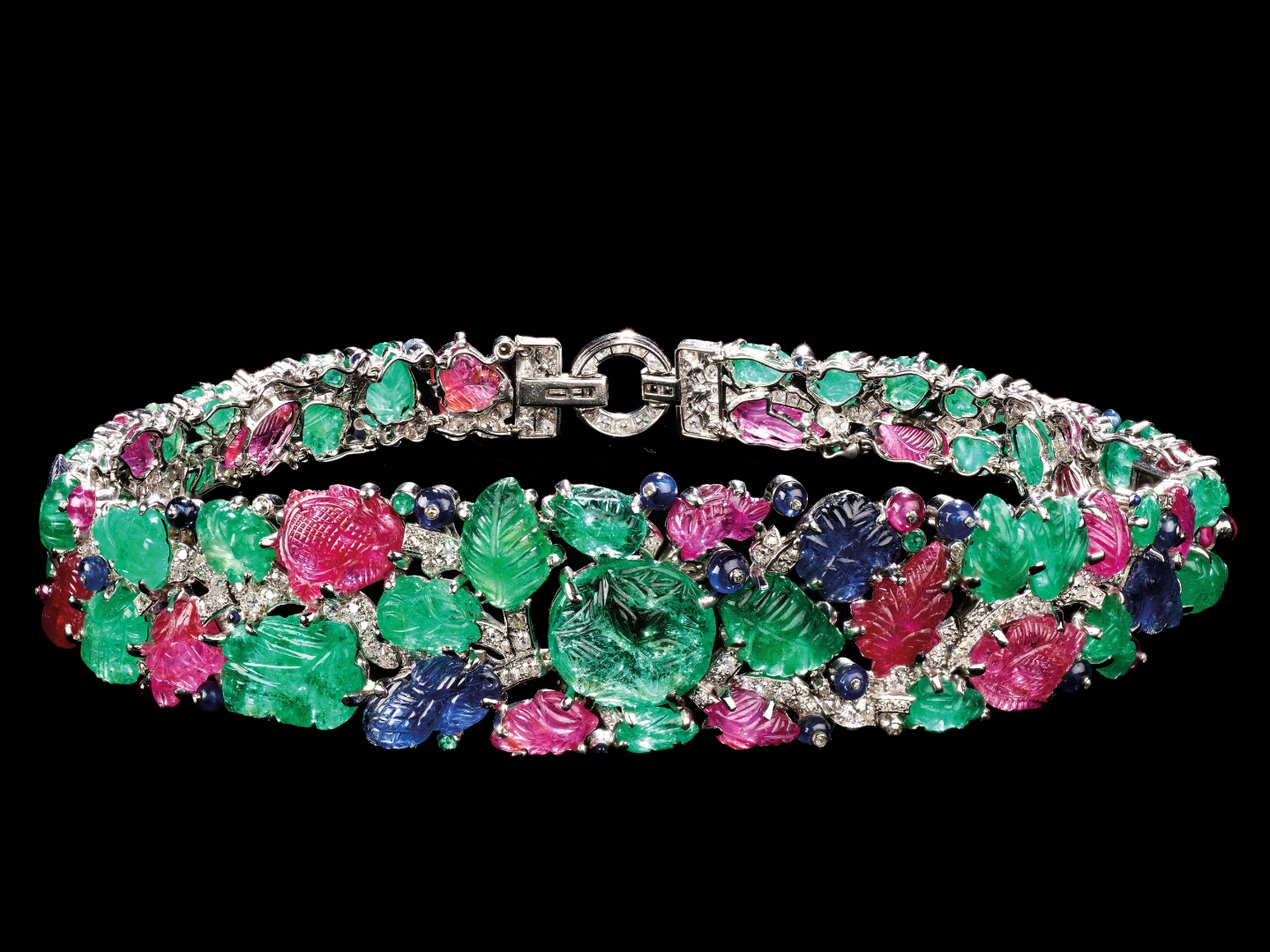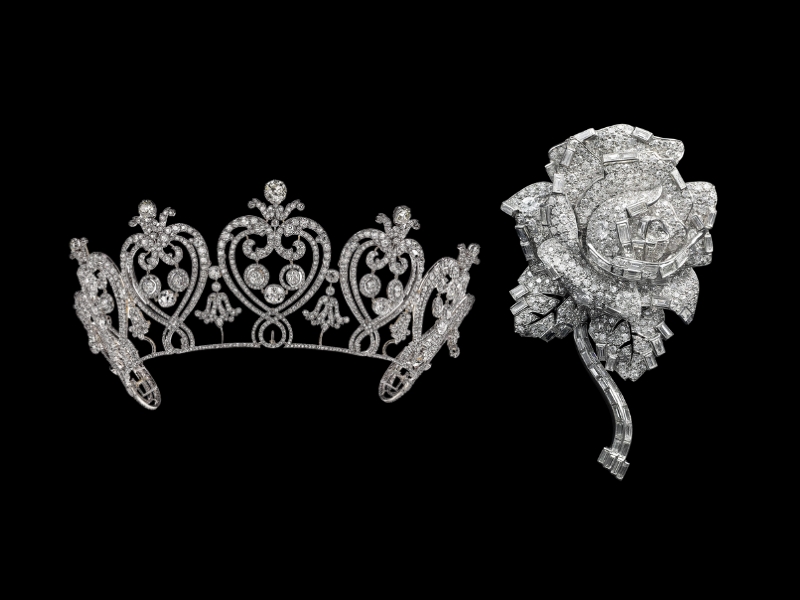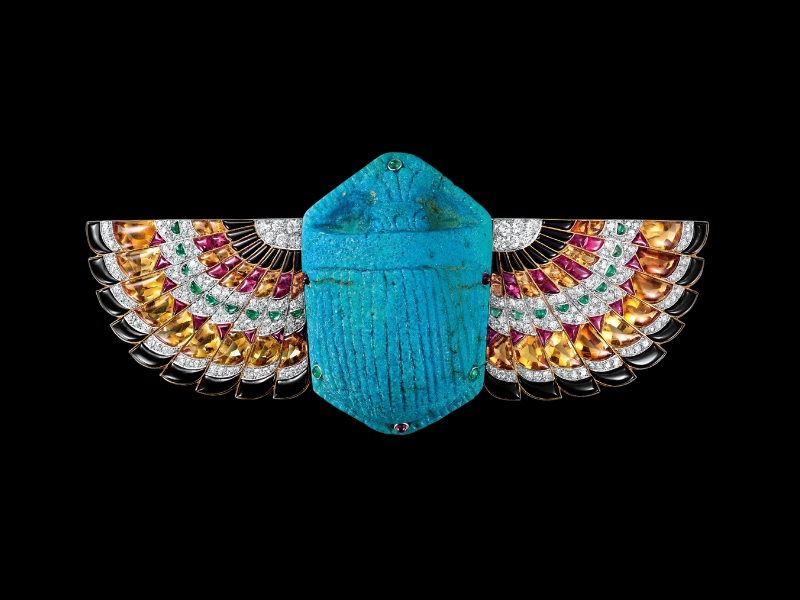
The Mountbatten Bandeau, made in 1928, is one of many marvels on display (All photos: Victoria and Albert Museum)
Its name needs little by way of introduction for those who have a penchant for the finest things in life. After all, French luxury powerhouse Cartier — originally founded by Louis-François Cartier, who had taken over his master’s workshop in Paris in 1847 — is one of the most highly regarded labels in haute joaillerie. While it was already famous among the French beau monde when Louis-François’ son Alfred was in charge, it was his grandsons Louis, Pierre and Jacques who scaled the business to global levels, setting up stores in Paris, London and New York.
Cartier swiftly found its way into the hearts of the international elite, all of whom appreciated the maison’s original designs and outstanding craftsmanship. Chief among its roster of esteemed clients is none other than the British aristocracy. This enduring relationship dates back to the early 20th century when Edward VII made a royal request for the brand to open a branch in London prior to his 1902 coronation, commissioning 27 tiaras for the momentous occasion. He then pronounced the house “the jeweller of kings, and the king of jewellers” and awarded Cartier a Royal Warrant in 1904, which it maintains to this day.
With Pierre and Jacques at the helm, Cartier began creating priceless object after object, and the public is able to view this regal assemblage of jewels and other arresting articles at the Victoria and Albert Museum in London for seven months starting April 12. Divided into three sections, the showcase is presented in the Sainsbury Gallery, V&A’s largest space which spans 1,100 sq m and features more than 350 treasures, including accessories, gemstones, drawings, watches and clocks from its archives, the Cartier Collection, Royal Collection, the UK and international museums, and private collectors.
Exhibition designer Asif Khan says, “I wanted our collaboration to be a dreamscape where art and science converge, with Cartier’s pieces suspended in light, time and sound, allowing history to breathe and the future to linger.”
The first part shows the collaborative efforts of the Cartier brothers who, even at a young age, took it upon themselves to transform the Parisian label into a global jeweller. There are fascinating stories on how the siblings built connections with key customers, demonstrating the brand’s ability to combine innovative designs and technical prowess to come up with unique objects that reflected clients’ individual style.
manchester_tiara_and_rose_brooch.jpg

In 1903, the house made the Manchester Tiara for Consuelo Montagu, the Cuban-American heiress who became the 8th Duchess of Manchester after her husband succeeded to the dukedom in 1890. To produce the headpiece with a flaming heart and graduate scroll shapes, it is said that Montagu supplied the house with over 1,000 brilliant-cut diamonds and 400 rose-cut diamonds herself which Cartier then perfected into a tiara, with additional diamonds and pasted stones that made up the scrolls at the end of each side.
Another star item is the Williamson Diamond brooch commissioned by Queen Elizabeth II in 1953 — the year of her coronation. It boasts the rare 23.6-carat pink Williamson Diamond she received as a wedding gift in 1947. One of the late Princess Margaret’s favourite possessions, a rose clip brooch she wore to her sister’s coronation, is also on display.
Pieces crafted based on Garland, Art Deco, Middle Eastern and South Asian aesthetics unveil anecdotes about the journeys taken by the house’s creative minds who travelled across the globe to acquaint themselves with different cultures as part of their efforts to develop Cartier’s signature styles. Jacques’ trips to the Middle East, India and Sri Lanka in the early 20th century also gained him entrée into a cloistered circle whose dealers then introduced him to invaluable caches of gems.
smash_watch_and_panther.jpg

Section two of the exhibition focuses on some of the most precious stones to have passed through the hands of Cartier’s artisans, from rare rubies and large sapphires to coloured and historic diamonds. Here, visitors will be reminded that the production of such exquisite jewels was only possible with skilled craftsmen working to its exacting standards in dedicated workshops. Observe also the invention of one of the maison’s iconic symbols — the panther — and how it has been reimagined and manipulated over the years using techniques that have been practised for centuries. The earliest usage of the motif can be seen in a 1914 wristwatch shown alongside a 1978 panther bracelet of pavé diamonds set with onyx.
This space also pays tribute to some of Cartier’s most notable timepieces, including the Santos and Crash. Recognised as the world’s first modern wristwatch, the former changed the direction of watchmaking in 1904 and became the standard for subsequent models. The latter — a unique creation intentionally deformed — embodies the artistic freedom that defined Swinging Sixties London, when young people challenged cultural norms and fought for new ways to enjoy fashion, music and entertainment. A collection of mystery clocks whose hands seem to float in mid-air as they move is also a guaranteed crowd-puller.
Other exhibits that highlight the beauty and quality of Cartier’s gemstones are the famed Tutti Frutti jewels, a jade necklace once owned by tragic American heiress Barbara Hutton, a 101-carat vivid yellow diamond Allnatt brooch and an aquamarine, diamond and platinum tiara made in the year of King George VI’s coronation.
The final part takes visitors on Cartier’s journey towards becoming a legendary jeweller while remaining relevant to successive generations. Celebrities, alongside royalty and aristocrats, continue to celebrate the brand and admire its oeuvre, some even going as far as to involve themselves in the creative process, giving their own contemporary twist to the finished product. A piece of Hollywood legend is presented here via Grace Kelly’s 10.48-carat step-cut diamond engagement ring which she also wore in High Society, her last film with Bing Crosby and Frank Sinatra, before she ended her movie career to marry Prince Rainier III of Monaco.
scarab_brooch.jpg

The exhibition wraps up with a glorious display of bejewelled headpieces, each representing Cartier’s creative imagination and impeccable technical skills. Aesthetes will surely be delighted at the sight of the Opal Tiara, commissioned by the Marchioness of Hartington, Mary Cavendish, in 1937; the Garland style Scroll Tiara from 1902, worn by Adele, Countess of Essex, and Clementine Churchill, wife of legendary British prime minister Winston Churchill, and, most recently, by Rihanna on the cover of W Magazine in 2016; and a 1934 Art Deco diamond and platinum halo tiara inspired by ancient Egypt, and donned by Begum Aga Khan III, considered one of the most stylish women of her day.
Curators Helen Molesworth and Rachel Garrahan say, “With its world-class collection, the V&A is the perfect stage to celebrate the pioneering achievements of Cartier and its transformative ability to remain at the centre of culture and creativity for more than a century. We are excited to be able to share with visitors some of Cartier’s most famous creations as well as reveal previously unseen objects and archive material that further enrich our understanding of a jewellery house that continues to influence the way we adorn ourselves today.”
'Cartier' runs until Nov 16. Tickets are available at vam.ac.uk.
This article first appeared on Apr 21, 2025 in The Edge Malaysia.


